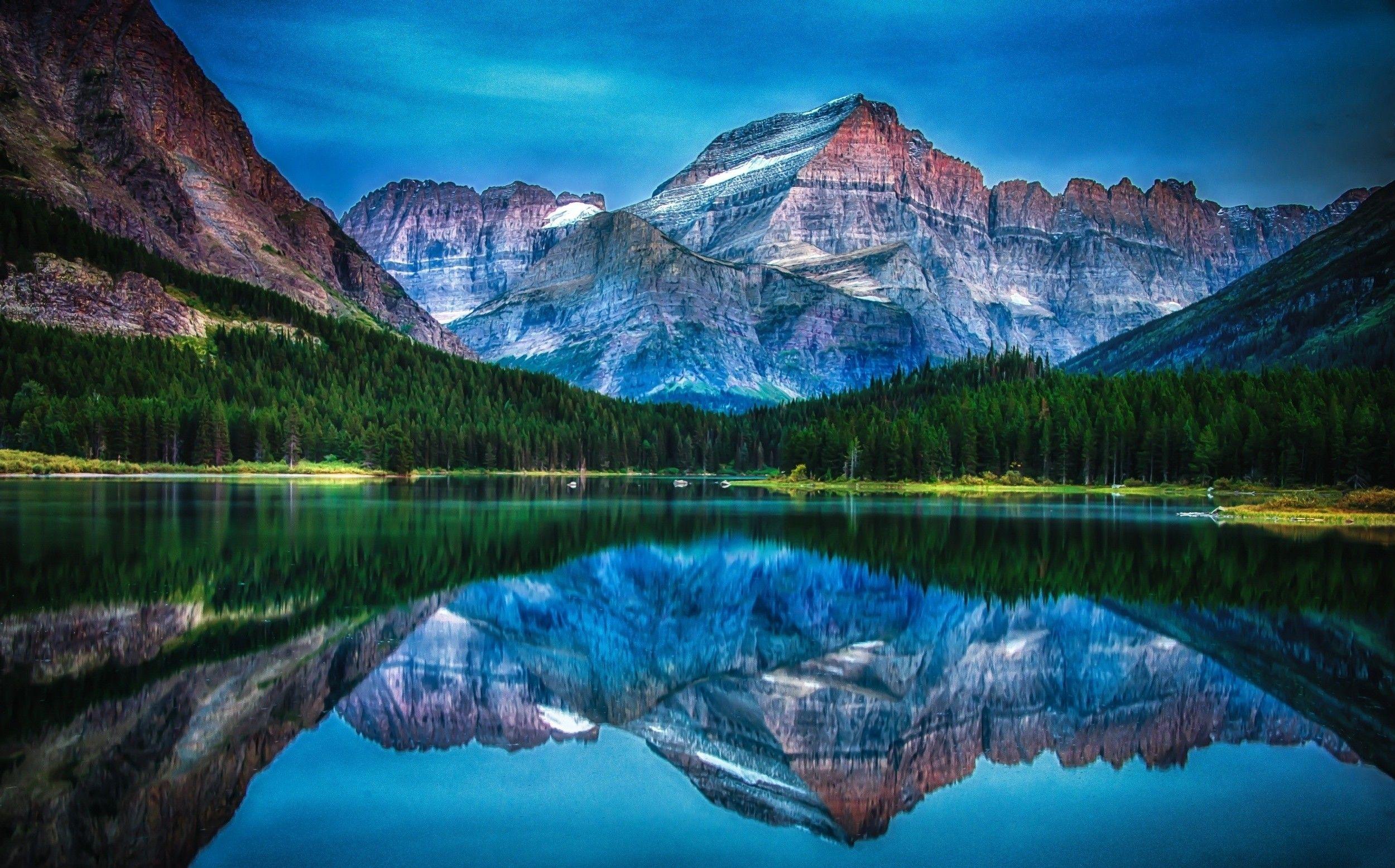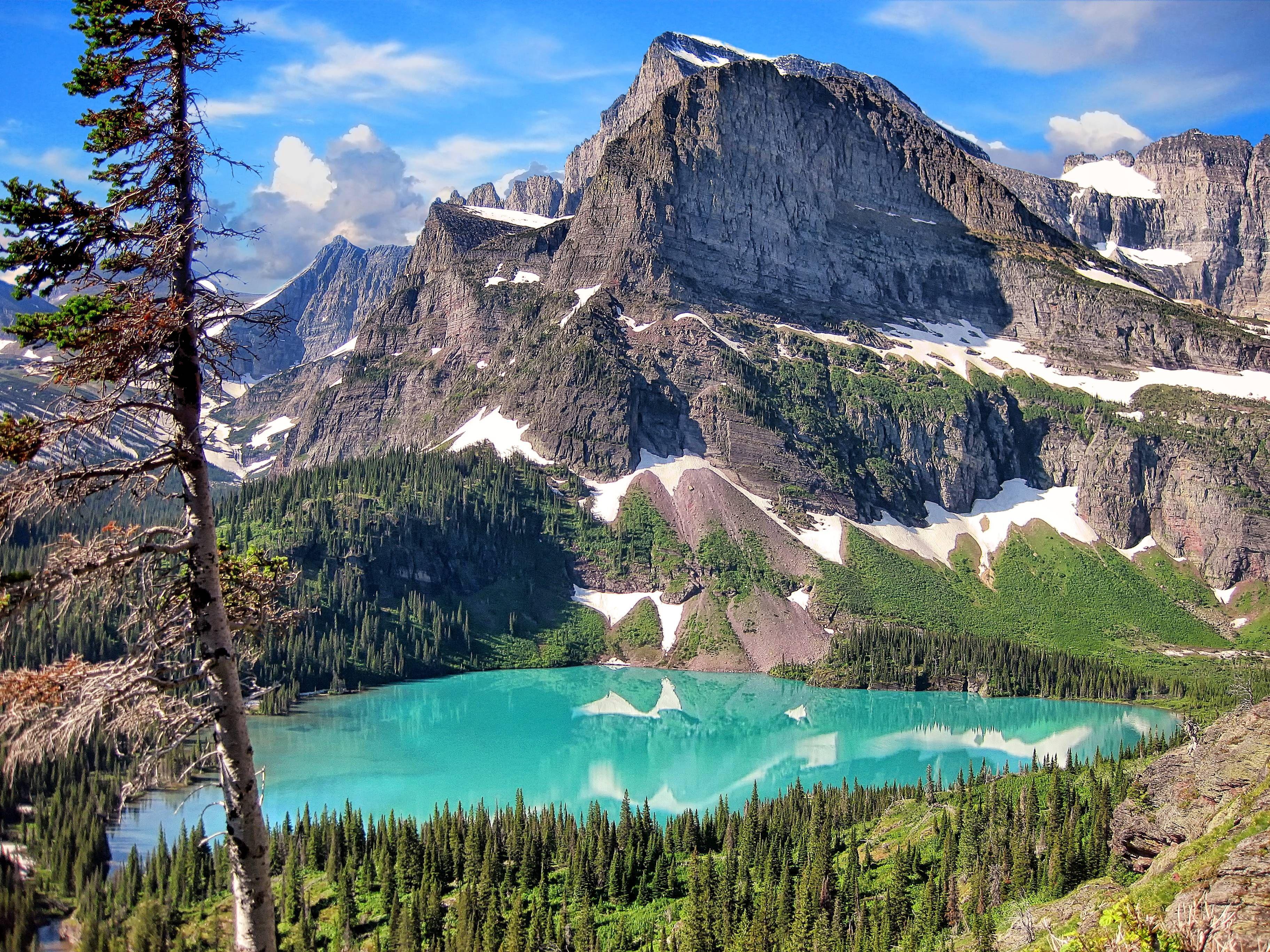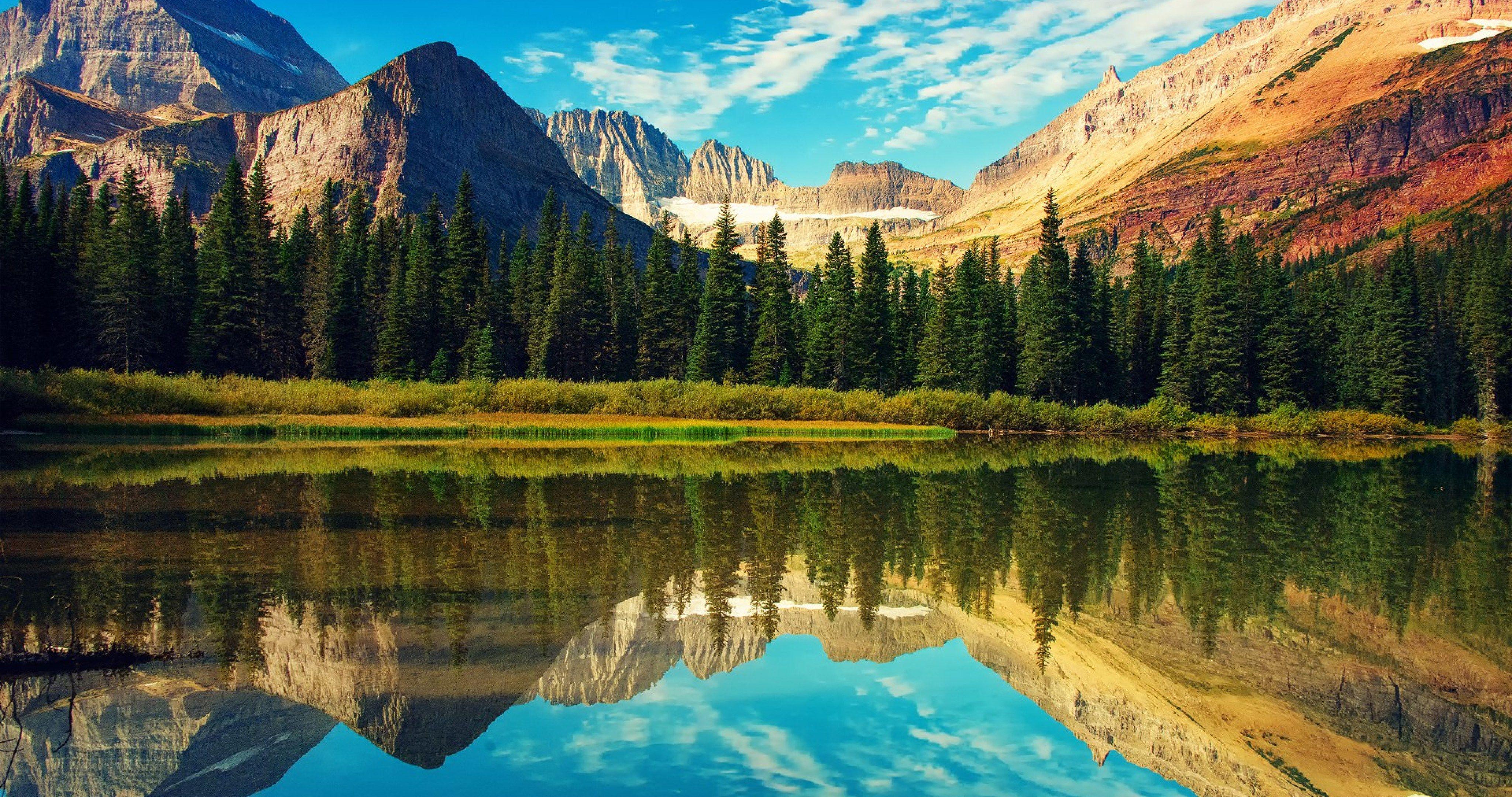Stepping into Glacier National Park feels, in a way, like arriving somewhere truly special, a place where the ordinary just melts away. It's almost as if you've found a secret world, a natural wonder that really takes your breath away. This incredible spot in Montana, known for its towering peaks and crystal-clear waters, offers a kind of wild beauty that is pretty hard to find anywhere else.
You know, for many people, visiting a place like this is a long-held dream, a chance to connect with nature on a grand scale. It's somewhere you can just feel the quiet power of the earth around you, a feeling that is rather unique. This park, often called the "Crown of the Continent," holds a very special spot in the hearts of those who love the outdoors.
Whether you're planning a trip, or perhaps just dreaming about one, this guide will help you get a real sense of what makes Glacier National Park so incredibly captivating. We will explore what you can see and do, and give you some helpful pointers for making your visit absolutely unforgettable. So, are you ready to discover the magic that waits?
Table of Contents
- Welcome to the Crown of the Continent
- Planning Your Unforgettable Glacier Trip
- Exploring Glacier's Natural Wonders
- Safety and Responsible Travel in the Wild
- Frequently Asked Questions About Glacier National Park
- Your Glacier Adventure Awaits
Welcome to the Crown of the Continent
Glacier National Park, a true jewel of the American West, covers more than a million acres of incredible landscapes. It is a place where ancient glaciers carved out valleys, leaving behind towering peaks and a truly stunning collection of lakes. You might, in a way, feel like you're stepping through a grand castle gatehouse when you first see the mountains rising up, so majestic and welcoming.
This park is home to a truly rich variety of plants and animals, some of which are quite rare. It's also a place where you can find remnants of a time when massive ice sheets shaped the very ground beneath your feet. The sheer scale of it all, you know, can feel a bit overwhelming at first, but in the best possible way.
It's a spot where the air just feels cleaner, the views are wider, and the sounds of nature are all around you. People often say, and it's quite true, that you guys obviously aren't from around here, huh, when they see the pure wonder on visitors' faces. It's a place that really changes your perspective, even just a little.
Planning Your Unforgettable Glacier Trip
Getting ready for a trip to Glacier National Park takes a bit of thought, but it's totally worth the effort. A well-planned visit means you can really enjoy everything this incredible place has to offer. So, let's look at some key things to consider before you go.
Best Times to Visit
The park's main season usually runs from late May through early October, but the exact timing really depends on what you want to do. Mid-summer, typically July and August, offers the best chance for all roads and trails to be open, and the weather is generally warmer. This is also when the park is most popular, so expect more people around.
If you prefer fewer crowds and don't mind cooler temperatures, late spring or early fall can be truly magical. In June, you might still see snow at higher elevations, but the waterfalls are often at their fullest. September brings beautiful fall colors and a quieter atmosphere, which is pretty lovely. Just be aware that some services might start to close down as the season winds to an end.
It's a good idea to check the park's official website for current conditions, especially road openings, before you make your plans. Things can change quite quickly with the weather, so staying informed is very helpful.
Getting Around the Park
Glacier National Park is quite large, and having a way to get around is pretty important. The Going-to-the-Sun Road is the park's most famous route, offering absolutely stunning views and connecting the east and west sides. This road is typically fully open from late June or early July until mid-October, depending on snow conditions.
During peak season, vehicle reservations are often required for sections of the Going-to-the-Sun Road, and other popular areas. You really need to plan ahead for these, as they can book up very quickly. There's also a free shuttle service along parts of the Going-to-the-Sun Road, which can be a great way to avoid parking headaches, especially at busy trailheads.
For those who prefer a different pace, cycling parts of the road before it fully opens to vehicles in spring can be an amazing experience. You get to see the park in a rather unique way, almost like you have it all to yourself, which is something special.
Where to Stay and Rest Your Head
There are many options for staying near or in Glacier National Park, from historic lodges to cozy campgrounds. Inside the park, you can find places like Many Glacier Hotel or Lake McDonald Lodge, which offer a truly classic park experience. These spots, you know, tend to book up very far in advance, sometimes a year out, so early reservations are really key.
Campgrounds within the park are also very popular, with some operating on a reservation system and others on a first-come, first-served basis. If you're planning to camp, especially in summer, arriving early in the day is pretty much essential to snag a spot. It's a bit of a race, sometimes, but worth it for the peace you find.
Outside the park, towns like Whitefish, Kalispell, and Coram offer a wide range of hotels, motels, and vacation rentals. These towns are a bit further away, but they provide more amenities and dining choices. Many people choose to stay just outside the park and drive in each day, which is perfectly fine, too.
Exploring Glacier's Natural Wonders
Once you're there, the real fun begins: exploring the incredible landscapes and diverse activities that Glacier National Park has to offer. There's so much to see and do, you know, that you could spend weeks here and still not see it all. It's a place that really invites you to wander and discover.
Iconic Drives and Scenic Views
The Going-to-the-Sun Road is, without a doubt, the park's most famous scenic drive. This engineering marvel winds its way through mountains, offering jaw-dropping views at every turn. You'll pass through different ecosystems, from dense forests to high alpine meadows, which is quite fascinating. Stopping at pullouts like Logan Pass or the Weeping Wall is pretty much a must for photos and just soaking it all in.
Another lovely drive is along the Many Glacier Road, leading to the Many Glacier area. This spot is often considered the "heart of the park" for its stunning lakes, abundant wildlife, and access to some of the most popular trails. The views here are, frankly, utterly spectacular, with glaciers seemingly just within reach.
Even just driving through the park can feel like a grand adventure, with new vistas appearing constantly. It's almost like a hot air balloon ride, giving you a broad, sweeping view of the world below, but from the comfort of your car. Just remember to drive slowly and pull over safely to enjoy the scenery.
Hiking Trails for Every Adventurer
Glacier National Park is a hiker's paradise, with trails ranging from easy strolls to challenging multi-day treks. For a gentle walk with incredible views, the Trail of the Cedars near Avalanche Lake is a pretty popular choice. It's a boardwalk trail that winds through an old-growth forest, very peaceful.
If you're looking for something a bit more strenuous, the Highline Trail from Logan Pass offers truly iconic views of the Garden Wall and surrounding peaks. This trail is often described as one of the best day hikes anywhere, and it's easy to see why. You might even spot mountain goats or bighorn sheep along the way, which is a real treat.
For those seeking a bit of a challenge, trails to Grinnell Glacier or Hidden Lake Overlook provide amazing rewards. Remember to carry plenty of water, wear sturdy shoes, and be prepared for changing weather conditions, even in summer. It's a place where the weather can, in a way, surprise you.
Wildlife Spotting and Respecting Nature
Glacier National Park is home to a wide array of wildlife, including grizzly bears, black bears, moose, elk, bighorn sheep, and mountain goats. Seeing these animals in their natural habitat is, for many, a highlight of their visit. Dawn and dusk are typically the best times for spotting animals, especially in areas like Many Glacier or along the Going-to-the-Sun Road.
It's incredibly important to remember that these are wild animals, and keeping a safe distance is absolutely essential. Park guidelines recommend staying at least 100 yards from bears and wolves, and 25 yards from other animals. Carrying bear spray and knowing how to use it is also a very good idea, especially when hiking.
Respecting the park's rules about wildlife viewing helps keep both you and the animals safe. Never approach or feed animals, and always store food properly to avoid attracting them. We all want to keep this amazing place wild, you know, for everyone.
Water Activities and Serene Lakes
With over 700 lakes, Glacier National Park offers plenty of opportunities for water-based fun. Lake McDonald, the largest lake in the park, is a popular spot for kayaking, paddleboarding, and boat tours. Its colorful pebbles along the shore are quite unique and pretty to look at.
Many Glacier Lake and Swiftcurrent Lake also offer boat tours, often providing a different perspective of the surrounding mountains and glaciers. Renting a canoe or kayak and paddling across the calm, clear waters can be an incredibly peaceful experience. It's a wonderful way to just relax and take in the scenery, perhaps in a way you hadn't considered.
Fishing is also permitted in many of the park's lakes and streams, with a valid Montana fishing license. Always check park regulations regarding specific areas and catch limits. The clear, cold waters are home to various fish species, making it a popular pastime for many visitors.
Safety and Responsible Travel in the Wild
While Glacier National Park offers incredible beauty, it's also a wild place that requires respect and preparation. Being prepared means you can really enjoy your visit without unnecessary worries. So, let's talk about staying safe and being a good steward of this amazing land.
Weather in the mountains can change, you know, incredibly fast. A sunny morning can quickly turn into a cold, rainy, or even snowy afternoon, even in summer. Dressing in layers is a very smart move, allowing you to add or remove clothing as conditions shift. Always carry rain gear, even if the forecast looks clear.
When hiking, staying on marked trails is absolutely important for your safety and to protect the fragile ecosystems. Let someone know your plans, especially for longer hikes, and carry a map, compass, or GPS device. Cell service is, frankly, quite limited in many parts of the park, so don't rely on your phone for navigation or emergencies.
Being mindful of your impact is also key. Follow the "Leave No Trace" principles: pack out everything you pack in, stay on trails, and respect wildlife. This park is a treasure, and it's up to all of us to keep it that way for future generations. It's a bit like ensuring a beloved story, say like "The Good Place" finale, has a truly satisfying end, rather than one that still rankles you, like "Smallville." We want everyone's experience here to be great.
Learn more about park regulations on our site, and for detailed trail information, you can link to this page .
Frequently Asked Questions About Glacier National Park
People often have questions when planning a trip to such a grand place. Here are a few common ones that might help you get ready.
How many days do you need for Glacier National Park?
Most visitors find that three to seven days gives them enough time to see the main sights and enjoy some hiking. With three days, you can typically drive the Going-to-the-Sun Road and do a couple of shorter hikes. A week allows for more in-depth exploration, including different areas of the park and longer trails, which is pretty nice.
What is the best month to visit Glacier National Park?
July and August are generally considered the best months, as all park roads and facilities are usually open, and the weather is at its warmest. However, these months are also the busiest. If you prefer fewer people and don't mind slightly cooler weather, late June or early September can be really lovely, too.
What is the most beautiful part of Glacier National Park?
That's a tough one, as the park is full of beauty! Many Glacier is often cited as the most beautiful area, with its stunning lakes, surrounding mountains, and abundant wildlife. Logan Pass on the Going-to-the-Sun Road also offers absolutely breathtaking alpine views. Each area, you know, has its own special charm.
Your Glacier Adventure Awaits
Glacier National Park truly offers an experience that stays with you, a chance to see some of the most stunning natural landscapes on Earth. From its soaring peaks to its quiet, clear lakes, every corner holds something wonderful to discover. It's a place that really invites you to step outside your usual routine and just breathe in the wild air.
Planning a trip here means preparing for a truly remarkable time, one filled with grand views and peaceful moments. Whether you're hiking a challenging trail, spotting a majestic animal, or simply enjoying the quiet beauty of a mountain lake, you'll find memories that last a lifetime. So, why not start dreaming about your own Montana adventure?
For more detailed planning resources and up-to-the-minute park alerts, you can always visit the official National Park Service website for Glacier National Park. It's a great place to get the most accurate and current information. So, what are you waiting for?



